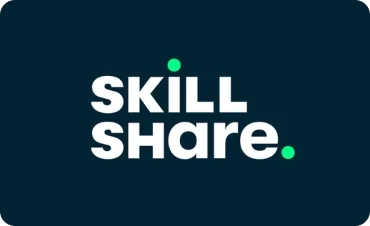When you enroll through our links, we may earn a small commission—at no extra cost to you. This helps keep our platform free and inspires us to add more value.

Create an Animated Character in Blender 2. 9
Unlock creativity with Skillshare! Learn acrylic painting, AI writing, graphic design, and photography. Explore thousands of engaging courses and develop new skills at�your�own�pace!

This Course Includes
 skillshare
skillshare 0 (0 reviews )
0 (0 reviews ) 14 hours 34 minutes
14 hours 34 minutes  english
english Online - Self Paced
Online - Self Paced course
course SkillShare
SkillShare
About Create an Animated Character in Blender 2. 9
Course Promo Video
Introduction
Importing Reference images
Beginning the Loop Mask
Completing the Loop Mask
Pulling the Face into 3D
Adjusting the Face and Adding the Eyes
Extruding the Forehead and Top of Head
Creating the Back and Side of the Head
Extruding the Neck
Creating the Ears
Creating the Inner Mouth
Adjusting the Lips and Extruding the Tongue
Beginning the Gums
Modeling the Top Teeth
Finishing the Teeth
Extruding the Torso
Modeling the Legs
Creating the Arms
Creating a Finger
Extruding the Hand
Connecting the Thumb
Extruding the Foot
Finishing the Feet
Creating the Shirt
Modeling the Shorts
Beginning the Shoes
Continuing the Shoes
Finishing the Shoe
Creating the Shoelaces
Sculpting the Socks
Preparing the Model for UV Mapping
UV Mapping the Shirt
UV Mapping the Clothes
UV Mapping the Legs and Arms
UV Mapping the Head
Organizing the UV Map
UV Mapping the Eyes and Teeth
Establishing the Materials
Beginning the Color Map
Working on the Color Map
Generating a Normal Map in Krita
Texturing the Eyes
Beginning to Texture Paint
Texture Painting the Skin Details
Painting the Freckles
Painting the Shirts Stripes
Beginning the Character's Hair
Texturing the Hair
Cutting and Combing the Hair
Creating the Eyebrows
Placing the Joints of the Rig
Adjusting the Finger Joints
Placing the Joints of the Face
Continuing the Face Joints
Modeling the Eyelids
Arranging the Joints of the Eyelids
Completing the MetaRig
Adjusting Alignment of the Rig
Rig Layers and Control Objects
Modifying the Control Objects
Binding the Character to the Rig
Parenting the Eyes, Hair, and Teeth
Adjusting the Character Weights
Assigning Weights to the Leg
Finishing the Leg Weights
Adjusting the Torso Weights
Assigning Weights for the Fingers
Assigning Weights for the Arm
Adjusting the Weights of the Face
Creating a Shape Key for the Eye Blink
Testing the Rig and Adjusting Weights
Setting Up the Interface for Animation
Beginning the Contact Poses
Continuing the Contact Positions
More Contact Positions
Ups and Downs and Planting the Feet
Working on the Feet
Arms, Fingers, Shoulders, and Head
Animating the Wave
Creating a FaceCam and Eye Blinks
Beginning the Lip Sync Animation
Continuing with the Lip Sync Animation
Creating a Test Render
Making Final Adjustments
Using the Graph Editor
Fixing the Weights of the Shorts
Adding Music and Sound FX
Rendering the Final Animation
Conclusion
What You Will Learn?
- Welcome to "Create an Animated Character in Blender 2.9." This course uses only open-source software, Blender and the paint program Krita, to create an animated character from the first polygon to the final rendered animation..
- We will begin by first bringing in the reference images of the character. And use Blender’s modeling tools to create the face with proper edge-flow for animation. We’ll create the hands, the feet, and the clothes. And when the modeling is done, we will UV map all the parts of the character, and we will use that UV map for our texturing..
- In the texturing phase, we will use Krita to create the textures for the clothes, and Blender’s own Texture Paint tools to paint the details of the skin. You’ll learn how to use Blender’s Particle System to create, cut, and comb the character’s hair..
- And then we will use Blender’s Rigify rigging system to set-up the bones of the character. We will bind the character mesh to the rig, and adjust the weights to improve the deformations..
- And when all of that is done, we will begin animating the character. You’ll learn how to set-up a reference video in Blender’s interface, how to animate character movements, and how to create lip sync animation for a dialogue track..
- In the end, we will add the music and sound effects, and then render the final animation to a video file..
- If you’ve ever wanted to create your own 3D animated character, then this course is for you. Using all open-source software, this course goes through every step of the process. So join me, and learn how to Create an Animated Character with Blender 2.9..